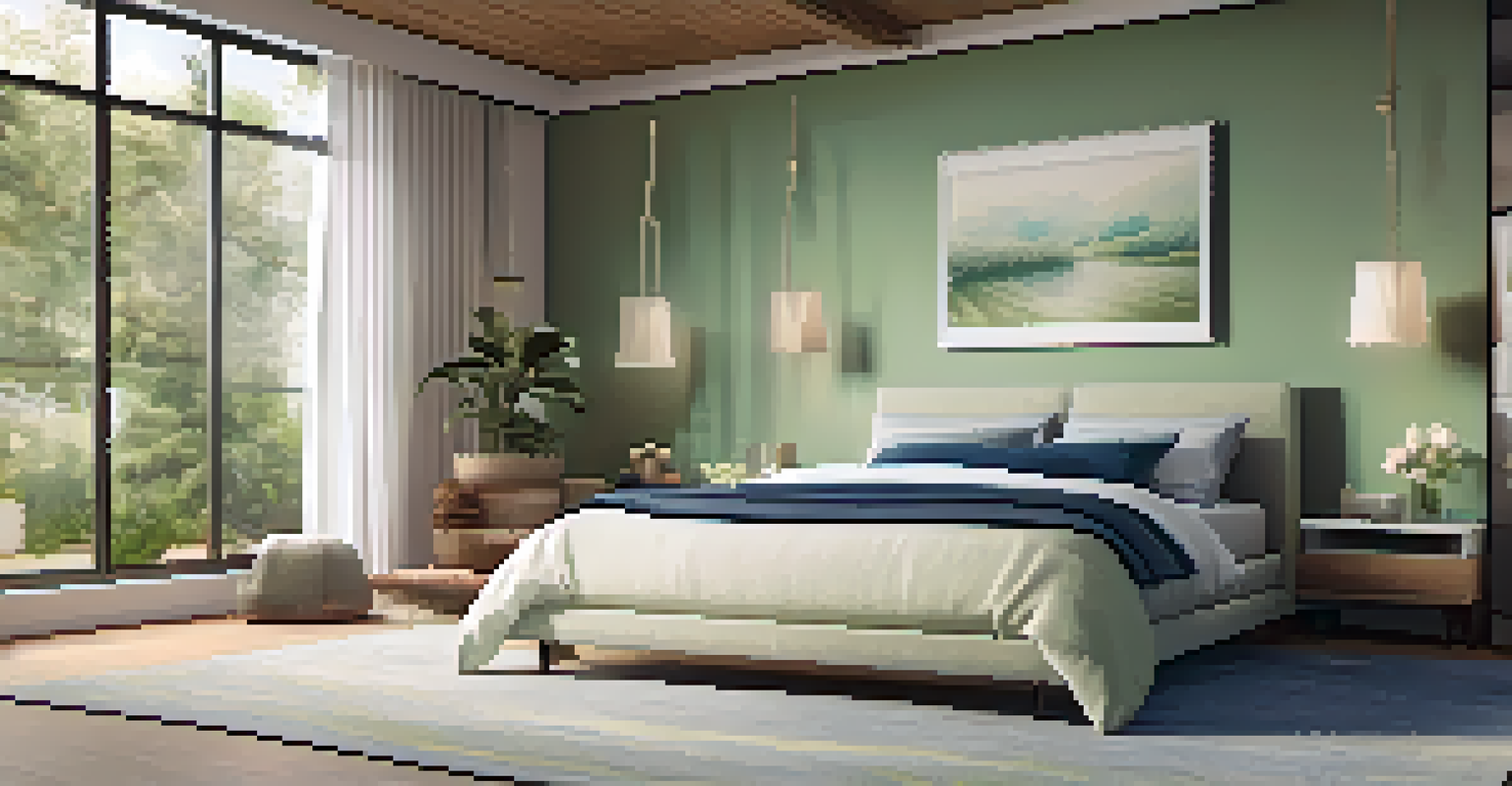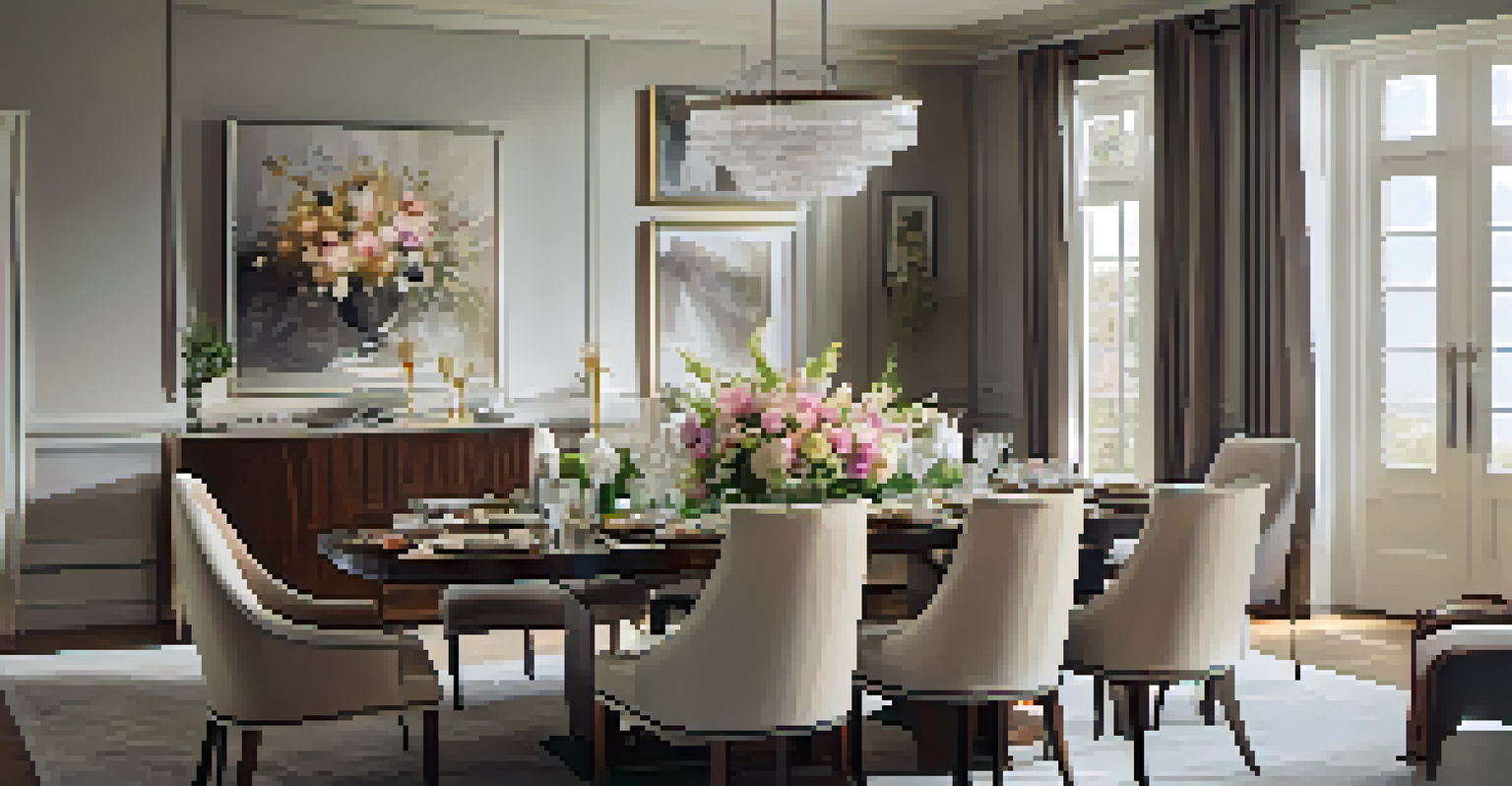The Importance of Ambiance: Creating Mood with Staging

Understanding Ambiance in Staging Environments
Ambiance refers to the overall atmosphere or mood of a space. It’s the feeling you get when you walk into a room, influenced by factors like lighting, colors, and decor. Think of a cozy coffee shop versus a bright, sterile office; both serve different purposes and evoke distinct feelings.
The details are not the details. They make the design.
Creating the right ambiance is crucial in various settings, from homes to events. It impacts how people interact, feel, and even remember the experience. This makes ambiance a powerful tool in staging, whether you're preparing for a showing or throwing a party.
Consider how different elements work together to create a cohesive atmosphere. A well-staged room uses elements like furniture arrangement, color schemes, and lighting to tell a story and evoke specific emotions, setting the stage for memorable experiences.
The Role of Lighting in Setting the Mood
Lighting is one of the most influential aspects of ambiance. It can transform a space from bright and bustling to intimate and serene with just a flick of a switch. For instance, soft, warm lights can create a cozy nook, while harsh fluorescent lights might make it feel cold and unwelcoming.

Different types of lighting serve different purposes. Natural light can invigorate a space, making it feel open and airy, whereas dim lighting might encourage relaxation and conversation. The key is to know when and how to use each type effectively.
Ambiance Shapes Experience
The overall atmosphere of a space, influenced by lighting, colors, and decor, significantly impacts how people feel and interact.
To enhance your staging, consider layering your lighting. Use a mix of ambient, task, and accent lights to create depth and interest. This layered approach not only highlights features of the space but also allows you to adjust the mood as needed.
Color Psychology: Choosing the Right Palette
Colors have a profound effect on our emotions and behaviors. For example, blue is often associated with calmness, while red can evoke excitement or urgency. When staging a space, the color palette you choose plays a crucial role in how the ambiance is perceived.
Design is not just what it looks like and feels like. Design is how it works.
Understanding color psychology can guide your choices in paint, furniture, and decor. For instance, using soft greens and blues in a bedroom can promote relaxation, while vibrant yellows in a kitchen can foster energy and creativity.
When selecting colors, consider the overall message you want the space to convey. A well-thought-out color scheme can enhance the ambiance, making it more inviting and engaging for anyone who enters.
Textures and Materials: Adding Depth to Staging
Textures and materials contribute significantly to a space's ambiance, adding layers and visual interest. Soft fabrics like velvet or cotton can create a sense of comfort, while hard surfaces like wood or metal can lend a modern feel.
Mixing different textures can enhance the sensory experience of a room. For example, pairing a plush rug with sleek furniture creates contrast and balance, making the space feel more dynamic and inviting.
Lighting Sets the Mood
Different types of lighting can transform a space, creating environments that range from inviting and cozy to bright and energetic.
When staging, think about how textures interact with lighting and color. A well-chosen combination can elevate a space, making it not just visually appealing, but also inviting and warm.
The Impact of Furniture Arrangement on Flow
Furniture arrangement plays a vital role in creating a functional and inviting space. The way furniture is positioned can influence how people move through a room and interact with one another. For instance, a circular arrangement can foster conversation, while a more linear setup might feel formal.
Consider the purpose of the space when arranging furniture. In a living room, for example, you might want to create a cozy gathering spot, while in a dining area, it’s important to facilitate ease of movement for serving and enjoying meals.
Effective furniture arrangement also takes into account the size and shape of the room. By maximizing space and creating clear pathways, you enhance the overall ambiance, making the area feel more welcoming and accessible.
Incorporating Personal Touches for Connection
Personal touches can significantly enhance the ambiance of a space by making it feel unique and inviting. Incorporating meaningful items like family photos, travel souvenirs, or artwork not only tells a story but also resonates with visitors on a personal level.
These elements add warmth and personality, making the space feel lived-in and relatable. It’s this connection that can make a room truly memorable, as it reflects the people who inhabit it.
Personal Touches Enhance Connection
Incorporating meaningful items into staging can make a space feel unique and relatable, fostering a deeper connection with visitors.
When staging for an event or showing a home, don’t shy away from including these personal touches. They can create a sense of comfort and familiarity, encouraging guests to linger and engage with the environment.
Scent: An Often Overlooked Element of Ambiance
While we often focus on visual aspects of staging, scent is a powerful yet frequently overlooked component of ambiance. Just as a beautifully arranged space can evoke emotions, certain fragrances can elicit memories and feelings, enhancing the overall experience.
For example, the smell of freshly baked cookies can create a warm, inviting atmosphere, while essential oils like lavender can promote relaxation. Choosing the right scent can make the space feel more welcoming and memorable.

When staging, consider using subtle scents to complement the visual elements. Whether it’s through candles, diffusers, or fresh flowers, the right fragrance can elevate the ambiance and create a lasting impression.
Creating a Cohesive Experience through Staging
To create a truly engaging ambiance, it’s essential to ensure all elements work together harmoniously. This means considering how lighting, color, textures, and personal touches combine to create a cohesive experience. When everything aligns, the space feels more inviting and complete.
Think of staging as storytelling; each element contributes to the narrative. Whether you’re staging a home for sale or setting up for an event, a well-rounded approach will leave a lasting impression on your audience.
Ultimately, the goal of staging is to evoke feelings and create memories. By focusing on ambiance, you can transform any space into a welcoming haven that resonates with those who enter.